Full Height Turnstile Installation Manual
1. Preparations before installation
1. Confirm that the installation site is powered on and networked
2. If there is a sunshade, the height of the ceiling should be at least 0.5 cm higher than the full-height gate.
3. Make sure that the installation ground is flat and stable.
2. Installation tools and accessories
Tools: Pistol Drill, Hexagon Socket, Hexagon Bit, Phillips Screwdriver, Slotted Screwdriver, Diagonal Pliers, Spirit Level
Auxiliary materials: about 15 meters of 1.0 square 2-core wire, about 15 meters of 0.1 square signal line, about 30 meters of network cable, switch, crystal head, insulating tape, 3cm drill tail screw and gasket, router
3. Specific installation steps
1. Digging and wiring according to the turnstile manual. Make sure strong and weak currents are separated into two pipes for wiring.
2. One person lifts the top cover, and the other person connects the side guardrail with the top cover according to the logo, and fixes the guardrail and the top cover with screws.
3.Put the movable bearing on rotating barrier arm, and then insert the rotating rod into the corresponding hole on the top cover.
4. Fix the full-height turnstile with 10*80MM or 10*100MM expansion screws.
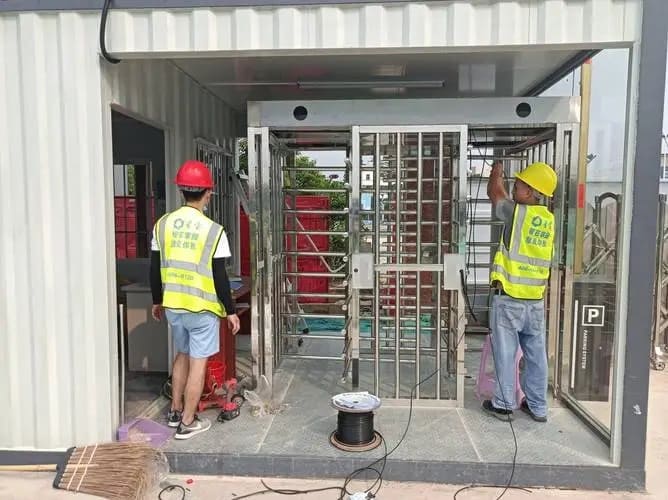
5. Connect the three-core power cord and Cat5e or Cat6e network cable, power on and connect to the network.
6. Card swiping test, and emergency button test. After the test, fix the full-height turnstile on the ground with expansion screws according to turnstile manual.
Safety Precautions Before Turnstile Installation
Turnstile installation is an important aspect of security management in any organization. It serves as a physical barrier that controls access to a building or a restricted area. However, before turnstile installation, it is important to take certain safety precautions to ensure a smooth and safe installation process. In this article, we will discuss 10 safety precautions that should be taken before turnstile installation.
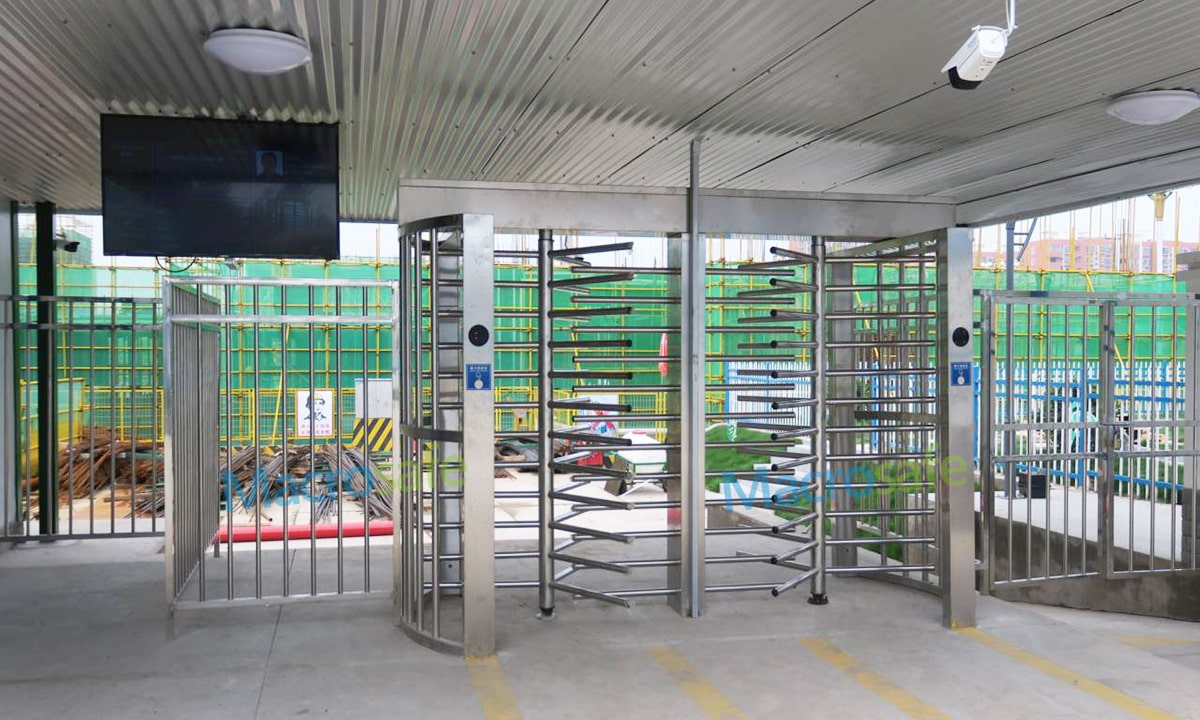 1. It is important to conduct a risk assessment to identify potential hazards and dangers associated with the installation process. This will help to develop a risk management plan that addresses these issues.
1. It is important to conduct a risk assessment to identify potential hazards and dangers associated with the installation process. This will help to develop a risk management plan that addresses these issues.
2. Ensure that the installation team is qualified and experienced in turnstile installation to minimize errors and reduce the risk of accidents.
3. Ensure that the installation site is clear of any debris, obstacles or potential hazards that could cause injury or damage to equipment.
4. Establish a clear communication plan between the installation team, security personnel and other stakeholders to ensure that everyone is aware of the installation process and potential risks.
5. Ensure that all necessary permits and licenses have been obtained before the installation process begins. This includes building permits, electrical permits, and any other permits required by local or state authorities.
6. Ensure that all necessary safety equipment and gear are provided to the installation team, including helmets, gloves, safety glasses, and other protective gear.
7. Establish a clear evacuation plan in case of an emergency or accident during the turnstiles installation process.
8. Ensure that all components of the turnstile are properly grounded to prevent electrical shock or damage to equipment.
9. Ensure that all wiring and electrical connections are properly installed and tested before the turnstile is put into operation.
10. Conduct a thorough inspection and testing of the turnstile before it is put into service to ensure that it is functioning properly and meets all safety requirements.
In conclusion, turnstile installation is an important aspect of security management. However, it is important to take necessary safety precautions to ensure a smooth and safe installation process. By following these 10 safety precautions, organizations can minimize the risk of accidents and ensure that their turnstile installation is a success.
8 Common Mistakes When installing turnstiles
When it comes to installing turnstiles, there are a number of common mistakes that can be made. These mistakes can lead to a variety of issues, from security breaches to wasted time and money.
1. Not considering the environment in which turnstiles will be installed.
Factors such as climate, lighting, and foot traffic patterns can all have an impact on the performance and durability of a turnstile. It's important to choose a full height turnstile that is suitable for the specific environment and conditions of your facility.
2. Not enough clearance
Not leaving enough clearance can be a serious issue. The full height turnstiles should be installed with enough space to allow for a smooth flow of traffic without causing congestion.
3. Failing to properly anchor full height turnstiles
The turnstile needs to be securely attached to the floor to prevent it from toppling over or being tampered with.
4. Incorrect wiring
Incorrect wiring can lead to malfunctions and compromise security. It is essential to hire a qualified electrician to properly wire the full height turnstile according to the turnstile diagram, so as to ensure that it is functioning correctly.
5. Improper alignment and calibration
Other common mistakes in turnstile installation include improper alignment and calibration, incorrect placement of sensors and detectors, and failure to properly secure the turnstile to the ground. These mistakes can all lead to performance issues, security vulnerabilities, and safety hazards.
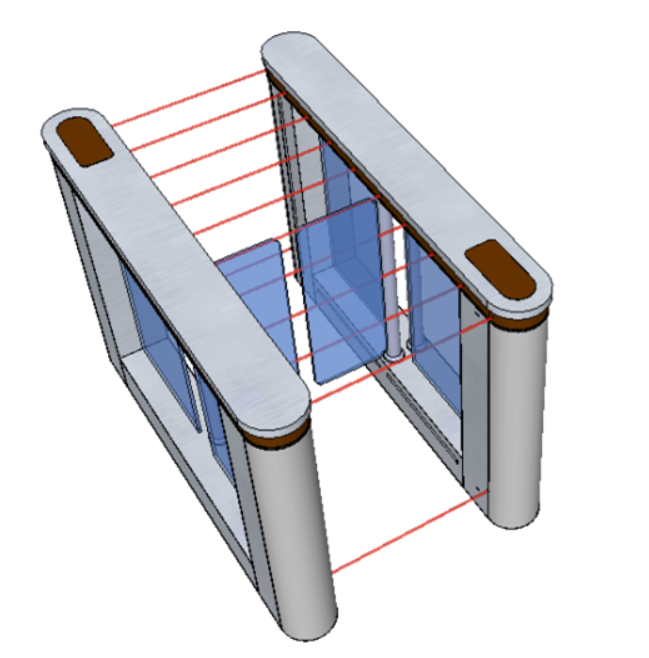
6. Not considering the user experience
Full height urnstiles should be installed in a way that is easy to use and does not cause inconvenience to the users. Proper placement and accessibility are key to ensuring user satisfaction.
7. Incompatible with existing security systems
Another common mistake when installing turnstiles is selecting the wrong type of turnstile for the intended use and failing to properly integrate the turnstile system with other security measures.
8. Failing to consider the needs of disabled individuals.
Some turnstiles are not accessible for handicapped. For example, tripod turnstile, regular flap barriers and most of the full height turnstiles. And if you need turnstiles to be handicapped accessible, then speed gates and swing barrier are perfect.
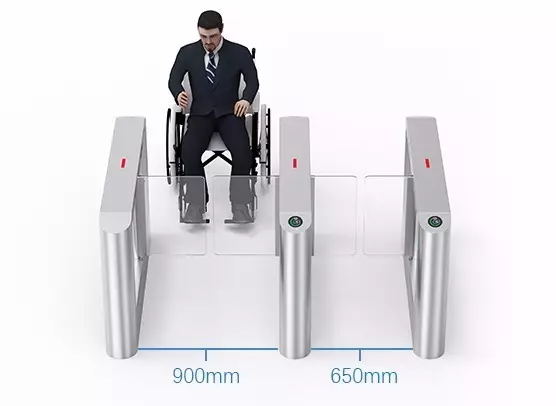
Read our complete guide to choosing ideal turnstile gates for more information.
Turnstile Diagram
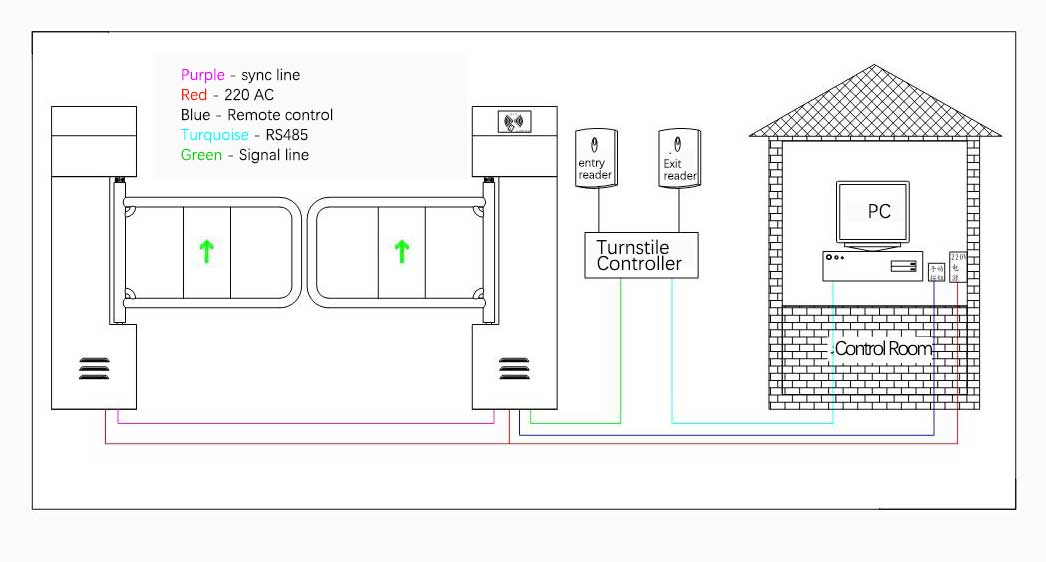 There are a few reasons why it is important to follow the manufacturer's turnstile diagram when installing turnstiles.
There are a few reasons why it is important to follow the manufacturer's turnstile diagram when installing turnstiles.
First, the diagram ensures that the turnstiles are installed in the correct direction. If the turnstiles are installed backwards or upside-down, they will not function properly.
Second, the manufacturer's turnstile diagram includes important information about the clearances that are required around the turnstiles. This information is important to ensure that the turnstiles can spin freely without hitting any obstacles.
Third, the manufacturer's turnstile diagram includes information about the power requirements for the turnstiles. This information is important to ensure that the turnstiles have the correct power supply and are compatible with the other electrical components in the area.
Fourth, the manufacturer's turnstile diagram includes information about the safety features of the turnstiles. This information is important to ensure that the turnstiles are safe to use and will not pose a hazard to pedestrians.
Finally, the manufacturer's turnstile diagram includes information about the warranty for the turnstiles. This information is important to know in case there are any problems with the turnstiles after they are installed.
By following the manufacturer's turnstile diagram, you can be sure that the turnstiles are installed correctly and will function properly. This will help to ensure the safety of pedestrians and the smooth operation of the turnstiles.
How to Perform Turnstile Maintenance Regularly?
1. Turnstile maintenance checklist
To ensure the optimal performance of turnstiles, regular maintenance is crucial. Below turnstile maintenance checklist is a comprehensive list of tasks that should be performed to keep turnstiles in good working condition.
1. Conduct a visual inspection of the turnstile. This involves checking for any physical damage or signs of wear and tear.
2. Check the mechanical components of the turnstile, such as the motor, gears, and belts. Any loose or broken parts should be repaired or replaced immediately.
3. Check the sensors and switches that control the movement of the turnstile. These components should be cleaned and calibrated regularly to ensure that they are functioning correctly.
4. Additionally, the turnstile's power supply should be checked to ensure that it is providing the necessary voltage and current to operate the turnstile.
5. It is also essential to check the turnstile's software and firmware regularly. This involves updating the software to the latest version and ensuring that it is free from any bugs or glitches.
Regular maintenance will not only extend the life of the turnstile but also prevent costly repairs and downtime.
2. Daily turnstile maintenance steps
Toosl: Phillips head screwdriver , spanner, cleaning supplies (cloth, water, stainless steel cleaner)
 1. Unplug the full height turnstile from the power source.
1. Unplug the full height turnstile from the power source.
2. Use the Phillips head screwdriver to remove the screws from the housing.
3. Lift the top of the housing off.
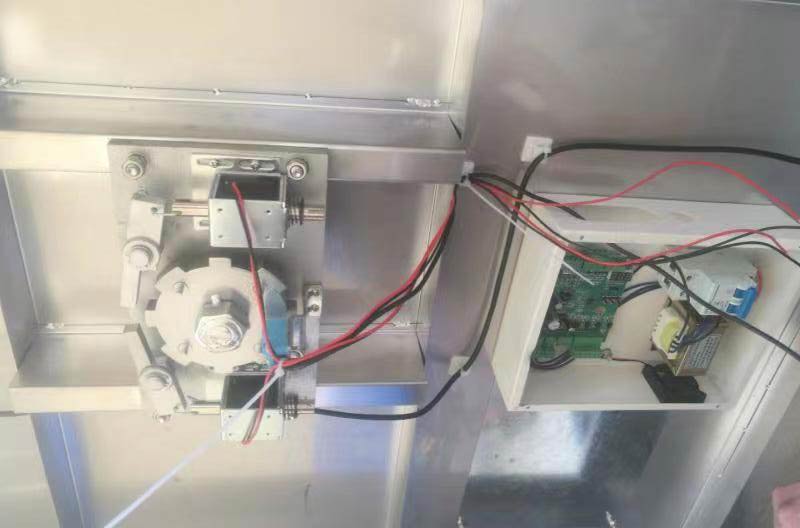 4. Remove internal dust and debris with a dry cloth.
4. Remove internal dust and debris with a dry cloth.
5. Tighten loose screws with a screwdriver
6. Regularly add lubricant to the bearing parts
7.Check whether the internal parts are aging
8. Put the top cover back on and retighten the screws to secure
9. Clean the turnstile housing with the stainless steel cleaner.
10. Plug the full height turnstile back into the power source.
To ensure that the full height turnstile is operating properly and to prevent any potential safety hazards, it is necessary to perform the above regular maintenance on the turnstile.
Common faults and solutions of full height gates
Full height turnstiles are an essential part of modern security systems that help control access to restricted areas. They are designed to ensure that only authorized individuals can enter through the designated entrance. However, like all mechanical devices, they can develop faults over time. Here are some of the most common faults that full height turnstiles experience, along with their solutions.
1. The rotation rod does not rotate after swiping the card
One of the most common faults that full height turnstiles suffer from is the inability to turn. This can be caused by various issues, such as a faulty motor or a damaged gearbox. The solution to this problem is to replace the faulty motor or gearbox with a new one.
2. Unable to read access control cards or tags.
Another common failure is the inability to read access cards or tags. This could be due to a disconnected wire between the card reader and the turnstile controller or a damaged card reader. The solution is to rewire and replace with a new card reader if damaged
3. Unable to lock
When the rotary barrier cannot be locked when it is closed, the main reason is that the electromagnet is damaged, or the control program is disordered. The electromagnet and detection control program should be replaced in time.
4. The rotating rod is stuck
In some cases, full height turnstiles may get stuck in the open or closed position. This can be caused by a faulty control board or a damaged sensor. The solution is to replace the faulty control board or sensor.
5. False alarms
Occasionally, full height turnstiles may produce an alarm sound even when there is no fault. This can be caused by a faulty alarm system or a damaged speaker. The solution is to replace the faulty alarm system or speaker.
In conclusion, regular maintenance of full height turnstiles is crucial to ensure their optimal performance. By identifying and addressing faults early, you can avoid costly repairs and equipment downtime.
More Articles:
How much is a turnstile gate? | Best Buying Guide
Top 5 Tripod Turnstiles in 2024 | Turnstile Buying Guide
Why turnstiles are perfect access control solutions for gyms?
TOP 5 Most Popular Flap Barrier Gates for Entrance Control
Compared with ordinary turnstiles, what are the advantages of glass turnstiles?
What are the types of half-height turnstiles?
Top 9 Benefits of Turnstile Barrier Gate for Your Business
8 Tips For Choosing Best Swing Barriers in 2024
Quick Installation of Speed Gate | 2024 Lastest Guide






